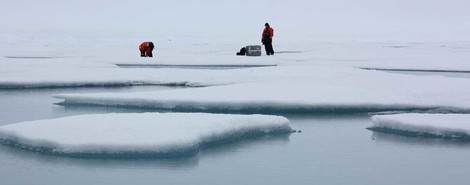Your podcast discovery platform
Curious minds select the most fascinating podcasts from around the world. Discover hand-piqd audio recommendations on your favorite topics.

piqer for: Climate and Environment Global finds Globalization and politics
I'm a freelance journalist, currently based in Madrid. I used to be a News Producer at CNBC in London before, but I thought a little bit more sun might do me good. Now I write for several news organizations, covering a range of topics, from Spanish politics and human rights for Deutsche Welle to climate change for La Marea.
The Thin Ice Age
The loss of Arctic ice is one of the most straightforward effects of man-made climate change. As temperatures get higher, ice melts earlier in the summer and forms back later in autumn. In addition to that, the Arctic warms up faster than the rest of the world, due to energy being carried there by the planet's weather systems.
This loss is also quite present in the media, because it's not only notorious, but also worrying. The disappearance of the polar caps would have irreversible chain effects (like the collapse of the jet stream) and set off feedback loops as the albedo effect loses power, speeding up global warming. The direct effects of ice melt are more obvious: A 66-metre (216 feet) rise in sea level, in the unlikely case that both Greenland and Antarctica lost all their ice.
So, understanding ice is very important. Despite that, we seem to not be doing it very well. Here's an excellent article from Mongabay to right some wrongs.
You have been warned (probably in several occasions) that the extent (or area) of the Arctic ice cap was being lost fast. You would be up for good news then, as 2017 wasn't a bad year: The extent of ice has held up, thanks to a summer that wasn't particularly warm in the region (remaining, in any case, well under the 1980–2010 average.)
Despite that, the real news is disheartening: What matters is not the area, but the volume, and in this case it has gone down a lot. Scientists (who are still scrambling for data to study ice volume) are calling it the Thin Ice Age.
"...atmospheric temperatures are not the only temps that matter. Sea surface temperatures were higher than normal in coastal regions, melting the ice from the sides and from below—reducing thickness through heat exchange and wave action"
Read on to know why this matters: This text is well sourced, well written and remarkably simple for such a complex topic. And a very relevant video drives the point home (watch it!).
Excellent job: I didn't expect less from Mongabay!
